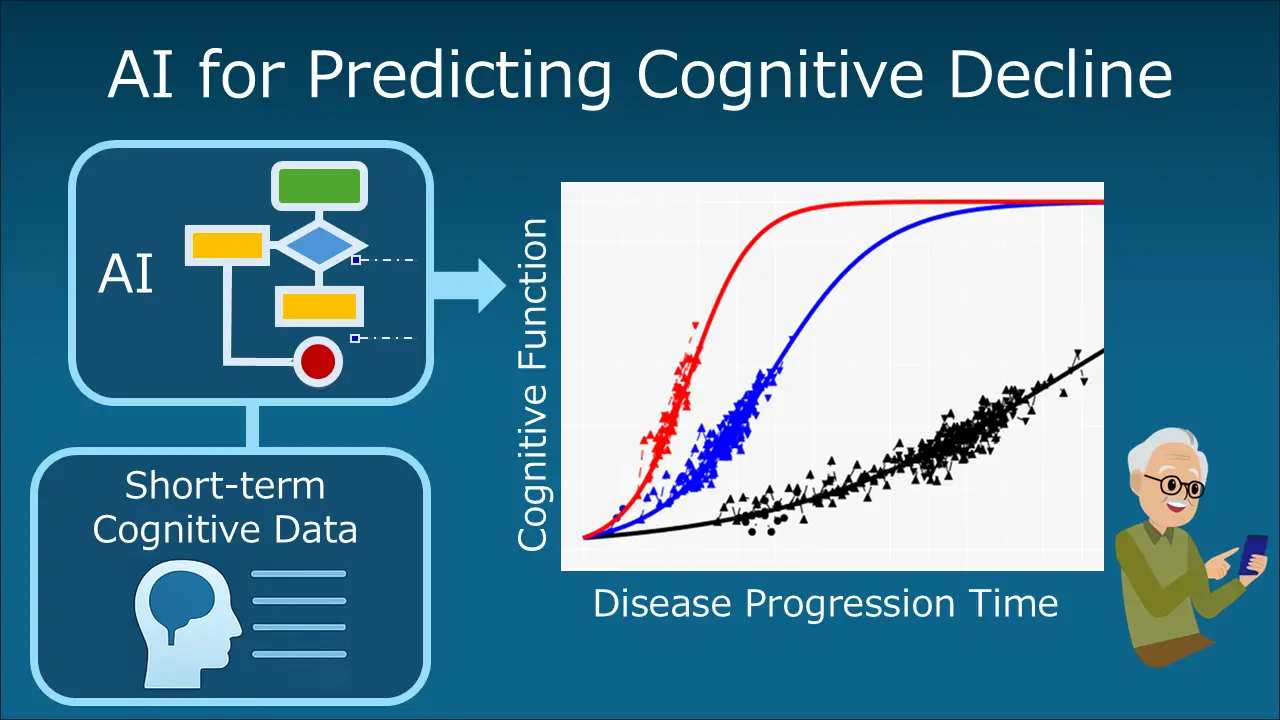2025-04-07 東京科学大学

<関連情報>
- https://www.isct.ac.jp/ja/news/taw3pn6svdyp#top
- https://www.isct.ac.jp/plugins/cms/component_download_file.php?type=2&pageId=&contentsId=1&contentsDataId=1110&prevId=&key=e372d61e5c066e686fa3286037538302.pdf
- https://ieeexplore.ieee.org/document/10904210
アルツハイマー病における縦断的認知機能低下の自己組織化予測-分類-重ね合わせ: 新しい臨床研究手法への応用 Self-Organized Prediction-Classification-Superposition of Longitudinal Cognitive Decline in Alzheimer’s Disease: An Application to Novel Clinical Research Methodology
Hiroyuki Sato; Ryoichi Hanazawa; Keisuke Suzuki; Atsushi Hashizume; Akihiro Hirakawa
IEEE Journal of Biomedical and Health Informatics Published:26 February 2025
DOI:https://doi.org/10.1109/JBHI.2025.3546020
Abstract
Progressive cognitive decline spanning across decades is characteristic of Alzheimer’s disease (AD). Various predictive models have been designed to realize its early onset and study the long-term trajectories of cognitive test scores across populations of interest. Research efforts have been geared towards superimposing patients’ cognitive test scores with the long-term trajectory denoting gradual cognitive decline, while considering the heterogeneity of AD. Multiple trajectories representing cognitive assessment for the long-term have been developed based on various parameters, highlighting the importance of classifying several groups based on disease progression patterns. In this study, a novel method capable of self-organized prediction, classification, and the overlay of long-term cognitive trajectories based on short-term individual data was developed, based on statistical and differential equation modeling. Here, “self-organized” denotes a data-driven mechanism by which the prediction model adaptively configures its structure and parameters to classify individuals and estimate long-term trajectories. We validated the predictive accuracy of the proposed method on two cohorts: the Alzheimer’s Disease Neuroimaging Initiative (ADNI) and the Japanese ADNI. We also presented two practical illustrations of the simultaneous evaluation of risk factor associated with both the onset and the longitudinal progression of AD, and an innovative randomized controlled trial design for AD that standardizes the heterogeneity of patients enrolled in a clinical trial. These resources would improve the power of statistical hypothesis testing and help evaluate the therapeutic effect. The application of predicting the trajectory of longitudinal disease progression goes beyond AD, and is especially relevant for progressive and neurodegenerative disorders.


